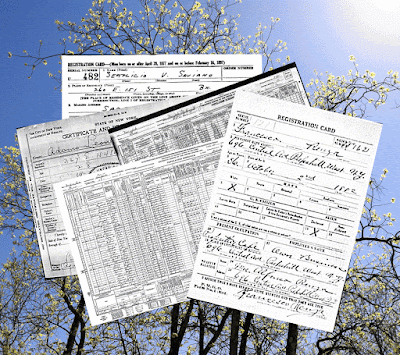It's a good thing the Family Tree Maker®/Ancestry.com® TreeSync® feature isn't working right now because that saved me from committing a genealogical sin.
I nearly posted bad information about someone. Publicly.
This wake-up call reminds me that it is so easy to be led astray when researching a family you know nothing about. It all started when a woman contacted me on ancestry.com about her great grandfather Rudolph, who is in my tree.
He is in my tree with very few facts because he was the father of a woman who married a cousin of mine. Since the cousin himself is so distant to me, I did not go into great detail about his wife's ancestors—just the names of her parents.
But after hearing from Rudolph's descendant and collaborating with her to find his marriage record, I spent a little time searching for more facts about him.
Many cultures embrace the practice of naming children after their grandparents, which is a potential pitfall for genealogists. I fell right into that trap yesterday, following the wrong Rudolph, son of the wrong August.
I found what seemed like Rudolph's family, but missing Rudolph, only to be told that while the husband and wife's names matched, the birthplace, immigration year, and occupation did not match what his descendant knew to be true and had thoroughly documented.
 |
| Multiple, agreeing sources let you know you've got things right. |
There's a reason why everyone tells you start your family tree with yourself and work your way up. Once you get beyond the relatives you knew personally—such as your grandparents and their siblings—nothing is certain until you have an abundance of corroborating facts.
For example, if you're investigating a distant branch, such as the in-laws of your great great uncle, you probably won't have any first-hand knowledge of that family. To help ensure you're putting the right facts in your tree you'll need a few things:
- Your great great uncle's marriage record can give you his wife's name (let's call her June for this example), birth year, and her parents' names.
- Now you can look for June in census records, making sure to match the names you know and June's birth year.
- Once you find them you can search for the same family, possibly at the same address, in different census years, making sure the facts line up. There should not be too much discrepancy among the censuses when it comes to recorded immigration years, age, place of birth, and occupation. Since you know when June was married, you would not expect to find her with her family instead of her husband after that time.
- Before going too far with June's family, search for any military records for the man you've identified as her father. Check to see if the censuses closest to the military record match for residence, wife's name or number of children.
As I browse through my tree of 19,295 people, I can find a number of dubious facts that I know need further investigation. But you know what it's like. So many relatives, so little time.
Be careful with your genealogy facts out there.
Family Tree Maker is a registered trademark of The Software MacKiev Company. Ancestry.com and TreeSync are registered trademarks of Ancestry.com Operations, Inc.
No comments:
Post a Comment